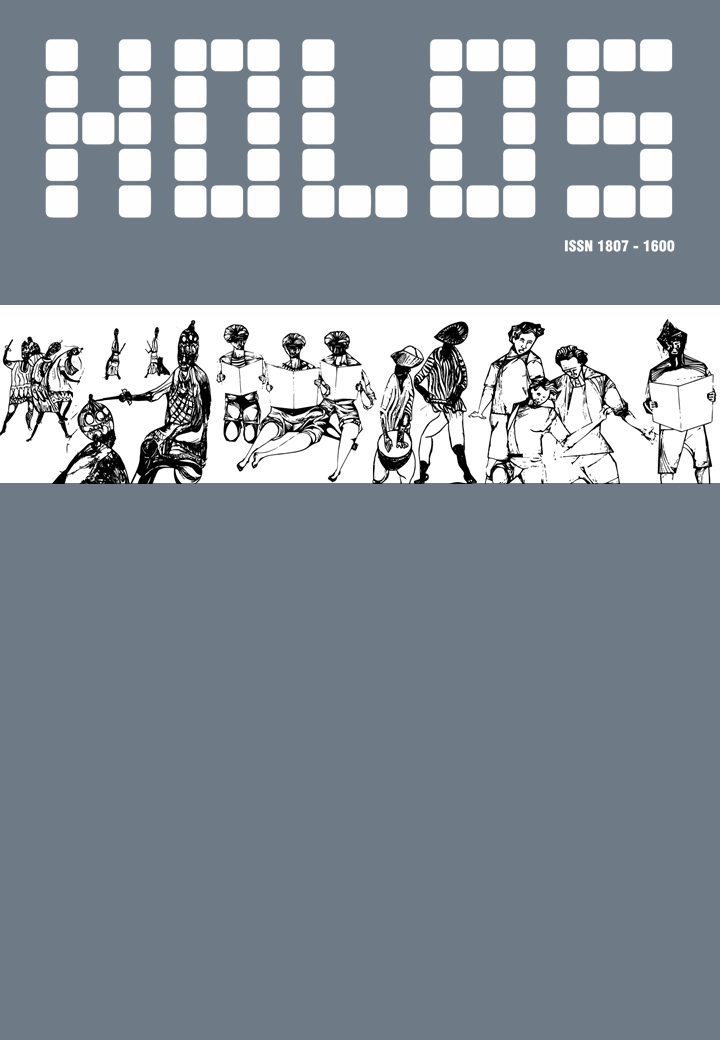ALTERNATIVE BINDERS TO BENTONITE FOR IRON ORE PELLETIZING: PART I: EFFECTS ON PHYSICAL AND MECHANICAL PROPERTIES
DOI:
https://doi.org/10.15628/holos.2014.1758Resumo
The use of conventional bentonite binder is favorable in terms of mechanical and metallurgical pellet properties, however, because of its acid constituents bentonite is considered as impurity especially for iron ores with high acidic content. Therefore, alternative binders to bentonite have been tested. Organic binders are the most studied binders and they yield pellets with good wet strength; they fail in terms of preheated and fired pellet strengths. This study was conducted to investigate how insufficient pellet strengths can be improved when organic binders are used as binder. The addition of a low-melting temperature and slag bonding/strength increasing constituent (free in acidic contents) into pellet feed was proposed. Addition of boron compounds such as colemanite, tincal, borax pentahydrate, boric acid together with organic binders such as CMC, starch, dextrin and some organic based binders, into iron oxide pellet was tested. Wet and thermally treated pellet physical-mechanical qualities (balling - moisture content - size - shape - drop number - compressive strengths - porosity - dustiness) were determined. The results showed that good quality wet, dry, preheated and fired pellets can be produced with combined binders (an organic binder plus a boron compound) when compared with bentonite-bonded pellets. While organic binders provided sufficient wet and dry pellet strengths, the boron compounds provided the required preheated and fired pellet strengths at even lower firing temperature. Especially, the contribution of boron compound addition is most pronounced for hematite pellets which do not have strengthening mechanism through oxidation like magnetite pellets during firing. Therefore, addition of boron compound is beneficial to recover the low physical-mechanical qualities of pellets produced with organic binders through slag bonding mechanism. Furthermore, lowering the firing temperature thanks to low-melting boron compounds will be cost-effective for firing part of the pelletizing plants.Downloads
Referências
ARORA, M.L., BARTH, E., UMPHRES, M.B. Technology evaluation of sequencing batch reactors. Journal Water Pollution Control Federation, v.57, n.8, p. 867-875, ago. 1985.
AKBERDIN A. and KIM A.S., “Production and blast-furnace smelting of boron-alloyed iron-ore pellets”, Steel in Translation, Vol. 38, No. 8, pp.625-629. © Allerton Press, Inc., 2008. Original Russian Text © A.A. Akberdin, A.S. Kim, published in “Stal” No. 8, pp. 10–14, 2008.
ASTM E 382-07 “Standard test method for determination of crushing strength of iron ore pellets”.
BALL D. F., DARTNELL J., DAVISON J., GRIEVE A., WILD R., “Agglomeration of iron ores”, American Elsevier Publishing company, Inc., New York, 1973.
COPELAND C. R. and KAWATRA S. K., “Dust Suppression in iron ore processing plant”, Minerals & Metallurgical Processing, 22, 4, Nov 2005, pp. 177.
EISELE T. C. and KAWATRA S. K., “A review of binders in iron ore pelletization”, Mineral Processing & Extractive Metallurgy Rev., Vol. 24: pp. 1-90, 2003.
GOETZMAN, H.E., BLEIFUSS, R.L. and ENGESSER, J., “Investigation of carboxymethyl cellulose binders for taconite pelletizing,” In: SME Annual Meeting, Phoenix, AZ, USA, 1988, pp. 88-111.
KATER, T., and STEEGHS, H.R.G., “Organic binders for iron ore pelletization”, In: 57th Annual Meeting of the Minnesota Section of AIME, Duluth-MN, USA, pp.13.1-13.29, 1984.
KAWATRA S.K. and RIPKE S.J., “Pelletizing steel mill desulfurization slag”, Int. J. Miner. Process., vol. 65, pp. 165-175, 2002.
KÖRO?LU M. N., “Use of calcined colemanite and bentonite as binders in the pelletizing of Hasan Çelebi iron ore”, M.Sc. Thesis, Middle East Technical University, Ankara, Turkey, 1980.
MALYSHEVA T.Ya., CHESNOKOVA G.V., AKBERDIN A.A. and DOLITSKAYA O.A., “Effect of Boron on the Quality of Iron Ore Pellets”, Izvestiya Possiskoi Akadaemii Nauk. Metally, No. 1, pp. 3-7, 1996.
MEYER K., “Pelletizing of iron ores”, Springer-Verlag Berlin Heidelberg New York Verlag Stahleisen GmbH, Düsseldorf, 1980.
RIPKE, S.J. and KAWATRA, S.K., “Can fly-ash extend bentonite binder for iron ore agglomeration?” International Journal of Mineral Processing, Vol.60, Issues.3-4 Elsevier, Amsterdam, pp. 181-198, December 2000.
SCHMITT J., “A Method for Improving the Process and Quality of Iron Ore Pellets Made with Organic Binders”, in 66th Annual University of Minnesota Mining Symposium, April 19-20, Duluth, MN, USA, 2005.
SIVRIKAYA O., “Use of boron based binders in pelletization of iron ores: Alternative binders to bentonite for iron ore pelletization” LAP LAMBERT Academic Publishing, GmbH & Co. KG, Saarbrucken, Germany, ISBN-13: 978–3845475653, p. 260, 2011.
SIVRIKAYA, O., AROL A. I., “Investigation of the dust generation mechanism of sintered magnetite pellets by a novel dust tower” in proceedings of 142nd SME Annual Meeting and Exhibit and CMA 115th National Western Mining Conference, Denver, Colorado, USA, 24- 27 Feb 2013.
TIMUÇIN M., GEVECI A., SEVINÇ N., TOPKAYA Y. and ERIÇ H., “The use of colemanite in steel production”, Middle East Technical University Project No:84-04-07-00-13, pp. 100-111, 1986.









































